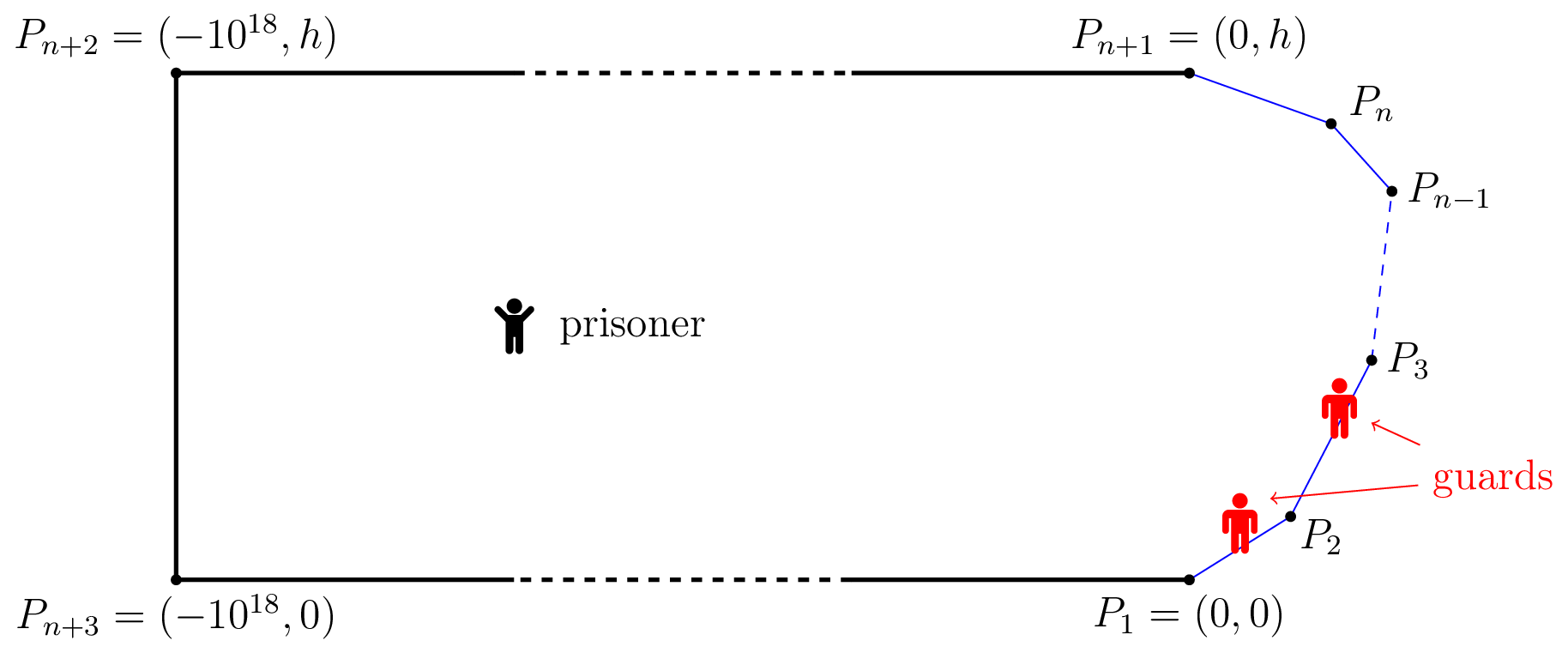A prisoner wants to escape from a prison. The prison is represented by the interior of the convex polygon with vertices $$$P_1, P_2, P_3, \ldots, P_{n+1}, P_{n+2}, P_{n+3}$$$. It holds $$$P_1=(0,0)$$$, $$$P_{n+1}=(0, h)$$$, $$$P_{n+2}=(-10^{18}, h)$$$ and $$$P_{n+3}=(-10^{18}, 0)$$$.

The prison walls $$$P_{n+1}P_{n+2}$$$, $$$P_{n+2}P_{n+3}$$$ and $$$P_{n+3}P_1$$$ are very high and the prisoner is not able to climb them. Hence his only chance is to reach a point on one of the walls $$$P_1P_2, P_2P_3,\dots, P_{n}P_{n+1}$$$ and escape from there. On the perimeter of the prison, there are two guards. The prisoner moves at speed $$$1$$$ while the guards move, remaining always on the perimeter of the prison, with speed $$$v$$$.
If the prisoner reaches a point of the perimeter where there is a guard, the guard kills the prisoner. If the prisoner reaches a point of the part of the perimeter he is able to climb and there is no guard there, he escapes immediately. Initially the prisoner is at the point $$$(-10^{17}, h/2)$$$ and the guards are at $$$P_1$$$.
Find the minimum speed $$$v$$$ such that the guards can guarantee that the prisoner will not escape (assuming that both the prisoner and the guards move optimally).
Notes:
The first line of the input contains $$$n$$$ ($$$1 \le n \le 50$$$).
The following $$$n+1$$$ lines describe $$$P_1, P_2,\dots, P_{n+1}$$$. The $$$i$$$-th of such lines contain two integers $$$x_i$$$, $$$y_i$$$ ($$$0\le x_i, y_i\le 1,000$$$) — the coordinates of $$$P_i=(x_i, y_i)$$$.
It is guaranteed that $$$P_1=(0,0)$$$ and $$$x_{n+1}=0$$$. The polygon with vertices $$$P_1,P_2,\dots, P_{n+1}, P_{n+2}, P_{n+3}$$$ (where $$$P_{n+2}, P_{n+3}$$$ shall be constructed as described in the statement) is guaranteed to be convex and such that there is no line containing three of its vertices.
Print a single real number, the minimum speed $$$v$$$ that allows the guards to guarantee that the prisoner will not escape. Your answer will be considered correct if its relative or absolute error does not exceed $$$10^{-6}$$$.
2 0 0 223 464 0 749
1
3 0 0 2 2 2 4 0 6
1.0823922
4 0 0 7 3 7 4 5 7 0 8
1.130309669
5 0 0 562 248 460 610 281 702 206 723 0 746
1.148649561
7 0 0 412 36 745 180 747 184 746 268 611 359 213 441 0 450
1.134745994